#Samuel and Ferris
Explore tagged Tumblr posts
Note
(Samuel)
I poke my head around the corner, exploring the unfamiliar manor's halls. I was about to write off the hallway as uninteresting and move on, but I did a double take as I saw a long-haired man standing alone in the hall. He had a snake wrapped around his arm, noticeably alive as its tongue flicked in and out of its mouth.
I approached cautiously while sticking close to the wall, my curiosity winning out over my desire to avoid people (help I cringed typing that, please put me down).
I wasn't sure whether to say something now or to wait until he noticed me, so I chose the latter and stayed silent, observing.
Samuel: I can sssssee you you know. Hasssn’t anyone ever told you it’sss rude to lurk? You could at leassst be better at it. (Scoffs) Was there ssssomething you wanted? (The snake swivelled it’s eyes towards you blinking it’s black beady eyes)
8 notes
·
View notes
Text

William Samuel Horton, Departing the Ferry, mid-1920s. Oil on canvas.
Source: Ephemeral New York
#vintage New York#1920s#Departing the Ferry#William Samuel Horton#oil painting#NY Harbor#ferry#painting#NY skyline#vintage NYC
79 notes
·
View notes
Text
wrote a Cadron fic on a boat. very sad very self indulgent — enjoy!!! hehe
#mean girls#Cady heron#aaron samuels#I did this in two and a half hours on a ferry instead of sleeping
4 notes
·
View notes
Text
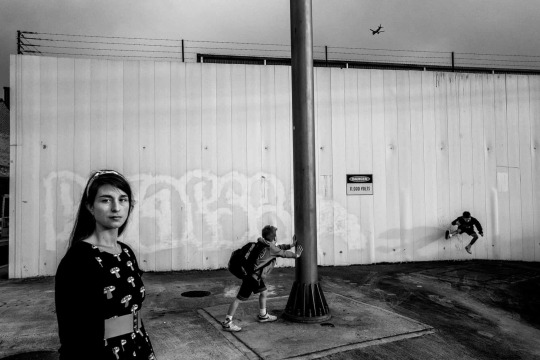
My partner, Luisa (pictured), and I have moved rentals nine times in the 13 years we’ve been in Sydney. This image was made while rushing between inspections on a Saturday last year. Our children, Orson and Leon, are in the background, letting loose some of their pent-up energy.
Location: Camperdown, New South Wales
Photograph: Samuel Ferris
Australian Life photography competition 2023
#samuel ferris#photographer#australian life photography competition#black & white photography#australia#camperdown#new south wales#street photography
0 notes
Text
Julie Samuel, Saint Etienne, Bond, Kubrick, witches and Foyles Bookshop
Julie was the female lead in Ferry Cross The Mersey in 1965… Yesterday’s blog was a chat with actress/producer/manager Julie Samuel who has just published her autobiography What Are We Going To Do About Julie? It continues below… Derek Cracknell: from Kubrick to Bond… JOHN: You married a movie person. JULIE: Derek Cracknell. He was a First Assistant Director in films. He worked on films like…
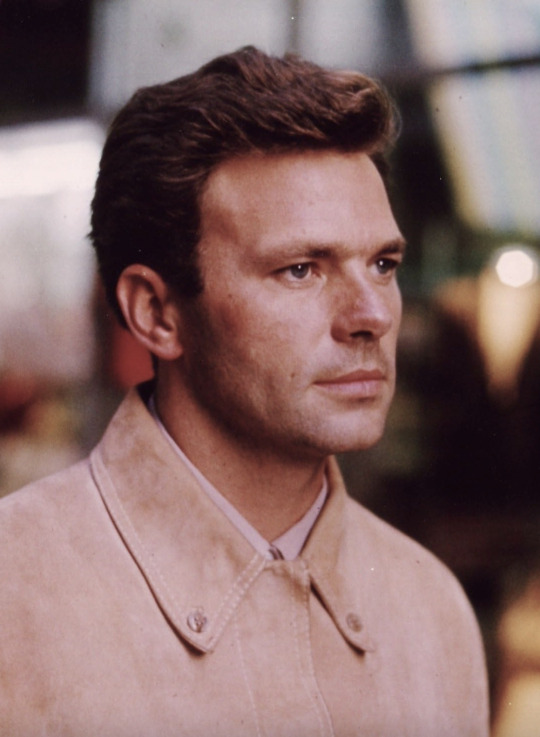
View On WordPress
#Barbara Tulloch#Bowl of Cherries#Can’t Smile Without You#Carolyn Pertwee#Christina Foyle#David Martin#Derek Cracknell#Ferry Cross The Mersey#Great Expectations#Julie Samuel#music#musical#Paco Rabanne#Saint Etienne#Sarah Cracknell#Shetland#showbisiness#The Long Ships#theatre#What Are We Going To Do about Julie#Wild Thyme#William Foyle#witches
1 note
·
View note
Text
Captain Alexander Hamilton: A Timeline
As Alexander Hamilton’s time serving as Captain of the New York Provincial Company of Artillery is about to become my main focus within The American Icarus: Volume I, I wanted to put a timeline together to share what I believe to be a super fascinating period in Hamilton's life that’s often overlooked. Both for anyone who may be interested and for my own benefit. If available to me, I've chosen to hyperlink primary materials directly for ease. My main repositories of info for this timeline were Michael E. Newton's Alexander Hamilton: The Formative Years, The Papers of Alexander Hamilton and The Papers of George Washington, Revolutionary War Series on Founders Online, and the Library of Congress, Hathitrust, and the Internet Archive. This was a lot of fun to put together and I can not wait to include fictionalizations of all this chaos in TAI (literally, 20-something chapters are dedicated to this) hehehe....
Because context is king, here is a rundown of the important events that led to Alexander Hamilton receiving his appointment as captain:
Preceding Appointment - 1775:
February 23rd: The Farmer Refuted, &c. is first published in James Rivington’s New-York Gazetteer. The publication was preceded by two announcements, and is a follow up to a string of pamphlet debate between Hamilton and Samuel Seabury that had started in the fall of 1774. The Farmer Refuted would have wide-reaching effects.
April 19th: Battles of Lexington and Concord — The first shots of the American War for Independence are fired in Lexington, Massachusetts, and soon followed by fighting in Concord, Massachusetts.
April 23rd: News of Lexington and Concord first reaches New York. [x] According to his friend Nicholas Fish in a later letter, "immediately after the battle of Lexington," Hamilton "attached himself to one of the uniform Companies of Militia then forming for the defense of the Country by the patriotic young men of this city." It is most likely that Hamilton enlisted in late April or May of 1775, and a later record of June shows that Hamilton had joined the Corsicans (later named the Hearts of Oak), alongside Nicholas Fish and Robert Troup (see Newton, Michael E. Alexander Hamilton: The Formative Years, pg. 127; for Fish's letter, Newton cites a letter from Fish to Timothy Pickering, dated December 26, 1823 within the Timothy Pickering Papers of the Massachusetts Historical Society).
June 14th: Within weeks of his enlistment, Hamilton's name appears within a list of men from the regiments throughout New York that were recommended to be promoted as officers if a Provencal Company should be raised (pp. 194-5, Historical Magazine, Vol 7).
June 15th: Congress, seated in Philadelphia, establishes the Continental Army. George Washington is unanimously nominated and accepts the post of Commander-in-Chief. [x]
Also on June 15th: Alexander Hamilton’s Remarks On the Quebec Bill: Part One is published in James Rivington’s New-York Gazetteer.
June 22nd: The Quebec Bill: Part Two is published in James Rivington’s New-York Gazetteer.
June 25th: On their way to Boston, General Washington and his generals make a short stop in New York City. The Provincial Congress orders Colonel John Lasher to "send one company of the militia to Powle's Hook to meet the Generals" and that Lasher "have another company at this side (of) the ferry for the same purpose; that he have the residue of his battalion ready to receive" Washington and his men. There is no confirmation that Alexander Hamilton was present at this welcoming parade, however it is likely, due to the fact that the Corsicans were apart of John Lasher's battalion. [x]
Also on June 25th: According to a diary entry by one Ewald Shewkirk, a dinner reception was held in Washington's honor. It is unknown if Hamilton was present at this dinner, however there is no evidence to suggest he could not have been (see Newton, Michael E. Alexander Hamilton: The Formative Years, pg. 129; Newton cites Johnston, Henry P. The Campaigns of 1776 around New York and Brooklyn, Vol. 2, pg. 103).
August 23-24th: According to his friend Hercules Mulligan decades later in his “Narrative” (being a biographical sketch, reprinted in the William & Mary Quarterly alongside a “Narrative” and letters from Robert Troup), Hamilton and himself took part in a raid upon the city's Battery with a group composed of the Corsicans and some others. They managed to haul off a good number of the cannons down in the city Battery. However, the Asia, a ship in the harbor, soon sent a barge and later came in range of the raiding party itself, firing upon them. According to Mulligan, “Hamilton at the first firing [when the barge appeared with a small gun-crew] was away with the Cannon.” Mulligan had been pulling this cannon, when Hamilton approached and asked Mulligan to take his musket for him, taking the cannon in exchange. Mulligan, out of fear left Hamilton’s musket at the Battery after retreating. Upon Hamilton’s return they crossed paths again and Hamilton asked for his musket. Being told where it had been left in the fray, “he went for it, notwithstanding the firing continued, with as much unconcern as if the vessel had not been there.”
September 14th: The Hearts of Oak first appear in the city records. [x] Within the list of officers, Fredrick Jay (John Jay’s younger brother), is listed as the 1st Lieutenant, and also appears in a record of August 9th as the 2nd Lieutenant of the Corsicans. This, alongside John C. Hamilton’s claims regarding Hamilton’s early service, has left historians to conclude that either the Corsicans reorganized into the Hearts of Oak (this more likely), or members of the Corsicans later joined the Hearts of Oak.
December 4th: In a letter to Brigadier General Alexander McDougall, John Jay writes “Be so kind as to give the enclosed to young Hamilton.” This enclosure was presumably a reply to Hamilton’s letter of November 26th (in which he raised concern for an attack upon James Rivington’s printing shop), however Jay’s reply has not been found.
December 8th: Again in a letter to McDougall, Jay mentions Hamilton: “I hope Mr. Hamilton continues busy, I have not recd. Holts paper these 3 months & therefore cannot Judge of the Progress he makes.” What this progress is, or anything written by Hamilton in John Holt’s N. Y. Journal during this period has not been definitively confirmed, leaving historians to argue over possible pieces written by Hamilton.
December 31st: Hamilton replies to Jay’s letter that McDougall likely gave him around the 14th [x]. Comparing the letters Hamilton sent in November and December I will likely save for a different post, but their differences are interesting; more so with Jay’s reply having not been found.
These mentionings of Hamilton between Jay and McDougall would become important in the next two months when, in January of 1776, the New York Provincial Congress authorized the creation of a provincial company of artillery. In the coming weeks, Hamilton would see a lot of things changing around him.
Hamilton Takes Command - 1776:
February 23rd: During a meeting of the Provincial Congress, Alexander McDougall recommends Hamilton for captain of this new artillery company, James Moore as Captain-Lieutenant (i.e: second-in-command), and Martin Johnston for 1st Lieutenant. [x]
February-March: According to Hercules Mulligan, again in his “Narrative”, "a Commission as a Capt. of Artillery was promised to" Alexander Hamilton "on the Condition that he should raise thirty men. I went with him that very afternoon and we engaged 25 men." While it is accurate that Hamilton was responsible for raising his company, as acknowledged by the New York Provincial Congress [later renamed] on August 9th 1776, Mulligan's account here is messy. Mulligan misdates this promise, and it may not have been realistic that they convinced twenty-five men to join the company in one afternoon. Nevertheless, Mulligan could have reasonably helped Hamilton recruit men between the time he was nominated for captancy and received his commission.
March 5th: Alexander Hamilton opens an account with Alsop Hunt and James Hunt to supply his company with "Buckskin breeches." The account would run through October 11th of 1776, and the final receipt would not be received until 1785, as can be seen in Hamilton's 1782-1791 cash book.
March 10th: Anticipating his appointment, Hamilton purchases fabrics and other materials for the making of uniforms from a Thomas Garider and Lieutenant James Moore. The materials included “blue Strouds [wool broadcloth]”, “long Ells for lining,” “blue Shalloon,” and thread and buttons. [x]
Hamilton later recorded in March of 1784 within his 1782-1791 cash book that he had “paid Mr. Thompson Taylor [sic: tailor] by Mr Chaloner on my [account] for making Cloaths for the said company.” This payment is listed as “34.13.9” The next entry in the cash book notes that Hamilton paid “6. 8.7” for the “ballance of Alsop Hunt and James Hunts account for leather Breeches supplied the company ⅌ Rects [per receipts].” [x]
Following is a depiction of Hamilton’s company uniform!
First up is an illustration of an officer (not Hamilton himself) as seen in An Illustrated Encyclopedia of Uniforms of The American War For Independence, 1775-1783 Smith, Digby; Kiley, Kevin F. pg. 121. By the list of supplies purchased above, this would seem to be the most accurate depiction of the general uniform.

Here is another done in 1923 of Alexander Hamilton in his company's uniform:

March 14th: The New York Provincial Congress orders that "Alexander Hamilton be, and he is hereby, appointed captain of the Provincial company of artillery of this Colony.” Alongside Hamilton, James Gilleland (alternatively spelt Gilliland) is appointed to be his 2nd Lieutenant. “As soon as his company was raised, he proceeded with indefatigable pains, to perfect it in every branch of discipline and duty,” Robert Troup recalled in a later letter to John Mason in 1820 (reprinted alongside Mulligan’s recollections in the William & Mary Quarterly), “and it was not long before it was esteemed the most beautiful model of discipline in the whole army.”
March 24th: Within a pay roll from "first March to first April, 1776," Hamilton records that Lewis Ryan, a matross (who assisted the gunners in loading, firing, and spounging the cannons), was dismissed from the company "For being subject to Fits." Also on this pay roll, it is seen that John Bane is listed as Hamilton's 3rd Lieutenant, and James Henry, Thomas Thompson, and Samuel Smith as sergeants.
March 26th: William I. Gilbert, also a matross, is dismissed from the company, "for misbehavior." [x]
March-April: At some point between March and April of 1776, Alexander Hamilton drops out of King's College to put full focus towards his new duties as an artillery captain. King's College would shut down in April as the war came to New York City, and the building would be occupied by American (and later British) forces. Hamilton would never go back to complete his college degree.
April 2nd: The Provincial Congress having decided that the company who were assigned to guard the colony's records had "been found a very expensive Colony charge" orders that Hamilton "be directed to place and keep a proper guard of his company at the Records, until further order..." (Also see the PAH) According to historian Willard Sterne Randall in an article for the Smithsonian Magazine, the records were to be "shipped by wagon from New York’s City Hall to the abandoned Greenwich Village estate of Loyalist William Bayard." [x]
Not-so-fun fact: it is likely that this is the same Bayard estate that Alexander Hamilton would spend his dying hours inside after his duel with Aaron Burr 28 years later.
April 4th: Hamilton writes a letter to Colonel Alexander McDougall acknowledging the payment of "one hundred and seventy two pounds, three shillings and five pence half penny, for the pay of the Commissioned, Non commissioned officers and privates of [his] company to the first instant, for which [he has] given three other receipts." This letter is also printed at the bottom of Hamilton’s pay roll for March and April of 1776.
April 10th: In a letter of the previous day [April 9th] from General Israel Putnam addressed to the Chairmen of the New York Committee of Safety, which was read aloud during the meeting of the New York Provincial Congress, Putnam informs the Congress that he desires another company to keep guard of the colony records, stating that "Capt. H. G. Livingston's company of fusileers will relieve the company of artillery to-morrow morning [April 10th, this date], ten o'clock." Thusly, Hamilton was relieved of this duty.
April 20th: A table appears in the George Washington Papers within the Library of Congress titled "A Return of the Company of Artillery commanded by Alexander Hamilton April 20th, 1776." The Library of Congress itself lists this manuscript as an "Artillery Company Report." The Papers of Alexander Hamilton editors calendar this table and describe the return as "in the form of a table showing the number of each rank present and fit for duty, sick, on furlough, on command duty, or taken as prisoner." [x]

The table, as seen above, shows that by this time, Hamilton’s company consisted of 69 men. Reading down the table of returns, it is seen that three matrosses are marked as “Sick [and] Present” and one matross is noted to be “Sick [and] absent,” and two bombarders and one gunner are marked as being “On Command [duty].” Most interestingly, in the row marked “Prisoners,” there are three sergeants, one corporal, and one matross listed.
Also on April 20th: Alexander Hamilton appears in General George Washington's General Orders of this date for the first time. Washington wrote that sergeants James Henry and Samuel Smith, Corporal John McKenny, and Richard Taylor (who was a matross) were "tried at a late General Court Martial whereof Col. stark was President for “Mutiny"...." The Court found both Henry and McKenny guilty, and sentenced both men to be lowered in rank, with Henry losing a month's pay, and McKenny being imprisoned for two weeks. As for Smith and Taylor, they were simply sentenced for disobedience, but were to be "reprimanded by the Captain, at the head of the company." Washington approved of the Court's decision, but further ordered that James Henry and John McKenny "be stripped and discharged [from] the Company, and [that] the sentence of the Court martial, upon serjt Smith, and Richd Taylor, to be executed to morrow morning at Guard mounting." As these numbers nearly line up with the return table shown above, it is clear that the table was written in reference to these events. What actions these men took in committing their "Mutiny" are unclear.
May 8th: In Washington's General Orders of this date, another of Hamilton's men, John Reling, is written to have been court martialed "for “Desertion,” [and] is found guilty of breaking from his confinement, and sentenced to be confin’d for six-days, upon bread and water." Washington approved of the Court's decision.
May 10th: In his General Orders of this date, General Washington recorded that "Joseph Child of the New-York Train of Artillery" was "tried at a late General Court Martial whereof Col. Huntington was President for “defrauding Christopher Stetson of a dollar, also for drinking Damnation to all Whigs, and Sons of Liberty, and for profane cursing and swearing”...." The Court found Child guilty of these charges, and "do sentence him to be drum’d out of the army." Although Hamilton was not explicitly mentioned, his company was commonly referred to as the "New York Train of Artillery" and Joseph Child is shown to have enlisted in Hamilton's company on March 28th. [x]
May 11th: In his General Orders of this date, General Washington orders that "The Regiment and Company of Artillery, to be quarter’d in the Barracks of the upper and lower Batteries, and in the Barracks near the Laboratory" which would of course include Alexander Hamilton's company. and that "As soon as the Guns are placed in the Batteries to which they are appointed, the Colonel of Artillery, will detach the proper number of officers and men, to manage them...." Where exactly Hamilton and his men were staying prior to this is unclear.
May 15th: Hamilton appears by name once more in General George Washington’s General Orders of this date. Hamilton’s artillery company is ordered “to be mustered [for a parade/demonstration] at Ten o’Clock, next Sunday morning, upon the Common, near the Laboratory.”
May 16th: In General Washington's General Orders of this date, it is written that "Uriah Chamberlain of Capt. Hamilton’s Company of Artillery," was recently court martialed, "whereof Colonel Huntington was president for “Desertion”—The Court find the prisoner guilty of the charge, and do sentence him to receive Thirty nine Lashes, on the bare back, for said offence." Washington approved of this sentence, and orders "it to be put in execution, on Saturday morning next, at guard mounting."
May 18th: Presumably, Hamilton carried out the orders given by Washington in his General Orders of May 16th, and on the morning of this date oversaw the lashing of Uriah Chamberlain at "the guard mounting."
May 19th: At 10 a.m., Hamilton and his men gathered at the Common (a large green space within the city which is now City Hall Park) to parade before Washington and some of his generals as had been ordered in Washington's General Orders of May 15th. In his Sketches of the Life and Correspondence of Nathanael Greene (on page 57), William Johnson in 1822 recounted that, (presumably around or about this event):
It was soon after Greene's arrival on Long Island, and during his command at that post, that he became acquainted with the late General Hamilton, afterwards so conspicuous in the councils of this country. It was his custom when summoned to attend the commander in chief, to walk, when accompanied by one or more of his aids, from the ferry landing to head-quarters. On one of these occasions, when passing by the place then called the park, now enclosed by the railing of the City-Hall, and which was then the parade ground of the militia corps, Hamilton was observed disciplining a juvenile corps of artillerist, who, like himself, aspired to future usefulness. Greene knew not who he was, but his attention was riveted by the vivacity of his motion, the ardour of his countenance, and not less by the proficiency and precision of movement of his little corps. Halt behind the crowd until an interval of rest afforded an opportunity, an aid was dispatched to Hamilton with a compliment from General Greene upon the proficiency of his corps and the military manner of their commander, with a request to favor him with his company to dinner on a specified day. Those who are acquainted with the ardent character and grateful feelings of Hamilton will judge how this message was received. The attention never forgotten, and not many years elapsed before an opportunity occurred and was joyfully embraced by Hamilton of exhibiting his gratitude and esteem for the man whose discerning eye had at so early a period done justice to his talents and pretensions. Greene soon made an opportunity of introducing his young acquaintance to the commander in chief, and from his first introduction Washington "marked him as his own."
Michael E. Newton notes that William Johnson never produced a citation for this tale, and goes on to give a brief historiography of it (Johnson being the first to write about this). While it is possible that General Greene could have sent an aide-de-camp to give his compliments to Hamilton after seeing his parade drill, there is no certain evidence to suggest that Greene introduced Hamilton to George Washington. Newton also notes that "John C. Hamilton failed to endorse any part of the story." (see Newton, Michael E. Alexander Hamilton: The Formative Years, pp. 150-152).
May 26th: Alexander Hamilton writes a letter to the New York Provincial Congress concerning the pay of his men. Hamilton points out that his men are not being paid as they should be in accordance to rules past, and states that “They do the same duty with the other companies and think themselves entitled to the same pay. They have been already comparing accounts and many marks of discontent have lately appeared on this score.” Hamilton further points out that another company, led by Captain Sebastian Bauman, were being paid accordingly and were able to more easily recruit men.
Also on May 26th: the Provencal Congress approved Hamilton’s request, resolving that Hamilton and his men would receive the same pay as the Continental artillery, and that for every man he recruited, Hamilton would receive 10 shillings. [x]
May 31st: Captain Hamilton receives orders from the Provincial Congress that he, “or any or either of his officers," are "authorized to go on board any ship or vessel in this harbour, and take with them such guard as may be necessary, and that they make strict search for any men who may have deserted from Captain Hamilton’s company.” These orders were given after "one member informed the Congress that some of Captain Hamilton’s company of artillery have deserted, and that he has some reasons to suspect that they are on board of the Continental ship, or vessel, in this harbour, under the command of Capt. Kennedy." Unfortunately, I as of writing this have been unable to find any solid information on this Captain Kennedy to better identify him, or his vessel.
June 8th: The New York Provincial Congress orders that Hamilton "furnish such a guard as may be necessary to guard the Provincial gunpowder" and that if Hamilton "should stand in need of any tents for that purpose" Colonel Curtenius would provide them. It is unknown when Hamilton's company was relieved of this duty, however three weeks later, on June 30th, the Provincial Congress "Ordered, That all the lead, powder, and other military stores" within the "city of New York be forthwith removed from thence to White Plains." [x]
Also on June 8th: the Provincial Congress further orders that "Capt. Hamilton furnish daily six of his best cartridge makers to work and assist" at the "store or elaboratory [sic] under the care of Mr. Norwood, the Commissary."
June 10th: Besides the portion of Hamilton's company that was still guarding the colony's gunpowder, it is seen in a report by Henry Knox (reprinted in Force, Peter. American Archives, 4th Series, vol. VI, pg. 920) that another portion of the company was stationed at Fort George near the Battery, in sole command of four 32-pound cannons, and another two 12-pound cannons. Simultaneously, another portion of Hamilton's company was stationed just below at the Grand Battery, where the companies of Captain Pierce, Captain Burbeck, and part of Captain Bauman's manned an assortment of cannons and mortars.
June 17th: The New York Provincial Congress resolves that "Capt. Hamilton's company of artillery be considered so many and a part of the quota of militia to be raised for furnished by the city or county of New-York."
June 29th: A return table, reprinted in Force, Peter's American Archives, 4th Series, vol. VI, pg. 1122 showcases that Alexander Hamilton's company has risen to 99 men. Eight of Hamilton's men--one bombarder, two gunners, one drummer, and four matrosses--are marked as being "Sick [but] present." One sergeant is marked as "Sick [and] absent" and two matrosses are marked as "Prisoners."
July 4th: In Philadelphia, the Continental Congress approves the Declaration of Independence.
July 9th: The Continental Army gathers in the New York City Common to hear the Declaration read aloud from City Hall. In all the excitement, a group of soldiers and the Sons of Liberty (who included Hercules Mulligan) rushed down to the Bowling Green to tear down an equestrian statue of King George III, which they would melt into musket balls. For a history of the statue, see this article from the Journal of the American Revolution.
Also on July 9th: the New York Provincial Congress approve the Declaration of Independence, and hereafter refer to themselves as the Convention of the Representatives of the State of New York. [x]
July 12th: Multiple accounts record that the British ships Phoenix and Rose are sailing up the Hudson River, near the Battery, when as Hercules Mulligan stated in a later recollection, "Capt. Hamilton went on the Battery with his Company and his piece of artillery and commenced a Brisk fire upon the Phoenix and Rose then passing up the river. When his Cannon burst and killed two of his men who I distinctly recollect were buried in the Bowling Green." Mulligan's number of deaths may be incorrect however. Isac Bangs records in his journal that, "by the carelessness of our own Artilery Men Six Men were killed with our own Cannon, & several others very badly wounded." Bangs noted further that "It is said that several of the Company out of which they were killed were drunk, & neglected to Spunge, Worm, & stop the Vent, and the Cartridges took fire while they were raming them down." In a letter to his wife, General Henry Knox wrote that "We had a loud cannonade, but could not stop [the Phoenix and Rose], though I believe we damaged them much. They kept over on the Jersey side too far from our batteries. I was so unfortunate as to lose six men by accidents, and a number wounded." Matching up with Bangs and Knox, in his own journal, Lieutenant Solomon Nash records that, "we had six men cilled [sic: killed], three wound By our Cannons which went off Exedently [sic: accidentally]...." A William Douglass of Connecticut wrote to his wife on July 20th that they suffered "the loss of 4 men in loading [the] Cannon." (as seen in Newton, Michael E. Alexander Hamilton: The Formative Years, pg. 142; Newton cites Henry P. Johnston's The Campaigns of 1776 in and around New York and Brooklyn, vol. 2, pg. 67). As these accounts cobberrate each other, it is clear that at least six men were killed. Whether these were all due to Hamilton's cannon exploding is unclear, but is a possibility. Hamilton of course was not punished for this, but that is besides the point.
One of the men injured by the explosion of the cannon was William Douglass, a matross in Hamilton's company (not to be confused with the William Douglass quoted above from Connecticut). According to a later certificate written by Hamilton on September 14th, Douglass "faithfully served as a matross in my company till he lost his arm by an unfortunate accident, while engaged in firing at some of the enemy’s ships." The Papers of Alexander Hamilton editors date Douglass' injury to June 12th, but it is clear that this occurred on July 12th due to the description Hamilton provides.
July 26th: Hamilton writes a letter to the Convention of the Representatives (who he mistakenly addresses as the "The Honoruable The Provincial Congress") concerning the amount of provisions for his company. He explains that there is a difference in the supply of rations between what the Continental Army and Provisional Army and his company are receiving. He writes that "it seems Mr. Curtenius can not afford to supply us with more than his contract stipulates, which by comparison, you will perceive is considerably less than the forementioned rate. My men, you are sensible, are by their articles, entitled to the same subsistence with the Continental troops; and it would be to them an insupportable discrimination, as well as a breach of the terms of their enlistment, to give them almost a third less provisions than the whole army besides receives." Hamilton requests that the Convention "readily put this matter upon a proper footing." He also notes that previously his men had been receiving their full pay, however under an assumption by Peter Curtenius that he "should have a farther consideration for the extraordinary supply."
July 31st: The Convention of the Representatives of the State of New York read Hamilton's letter of July 26th at their meeting, and order that "as Capt. Hamilton's company was formally made a part of General Scott's brigade, that they be henceforth supplied provisions as part of that Brigade."
A Note On Captain Hamilton’s August Pay Book:
Starting in August of 1776, Hamilton began to keep another pay book. It is evident by Thomas Thompson being marked as the 3rd lieutenant that this was started around August 15th. The cover is below:

For unknown reasons, the editors of The Papers of Alexander Hamilton only included one section of the artillery pay book in their transcriptions, being a dozen or so pages of notes Hamilton wrote presumably after concluding his time as a captain on some books he was reading. The first section of the book (being the first 117 image scans per the Library of Congress) consists of payments made to and by Hamilton’s men, each receiving his own page spread, with the first few pages being a list of all men in the company as of August 1776, organized by surname alphabetically. The last section of the pay book (Image scans 181 to 185) consists of weekly company return tables starting in October of 1776.
As these sections are not transcribed, I will be including the image scans when necessary for full transparency, in case I have read something incorrectly. Now, back to the timeline....
August 3rd: John Davis and James Lilly desert from Hamilton's company. Hamilton puts out an advertisement that would reward anyone who could either "bring them to Captain Hamilton's Quarters" or "give Information that they may be apprehended." It is presumed that Hamilton wrote this notice himself (see Newton, Michael E. Alexander Hamilton: The Formative Years, pp. 147-148; for the notice, Newton cites The New-York Gazette; and the weekly Mercury, August 5, 12, and September 2nd, 1776 issues).
August 9th: The Convention of the Representatives resolve that "The company of artillery formally raised by Capt. Hamilton" is "considered as a part of the number ordered to be raised by the Continental Congress from the militia of this State, and therefore" Hamilton's company "hereby is incorporated into Genl. Scott's brigade." Here, Hamilton would be reunited with his old friend, Nicholas Fish, who had recently been appointed as John Scott's brigade major. [x]
August 12th: Captain Hamilton writes a letter to the Convention of the Representatives concerning a vacancy in his company. Hamilton explains that this is due to “the promotion of Lieutenant Johnson to a captaincy in one of the row-gallies, (which command, however, he has since resigned, for a very particular reason.).” He requests that his first sergeant, Thomas Thompson, be promoted as he “has discharged his duty in his present station with uncommon fidelity, assiduity and expertness. He is a very good disciplinarian, possesses the advantage of having seen a good deal of service in Germany; has a tolerable share of common sense, and is well calculated not to disgrace the rank of an officer and gentleman.…” Hamilton also requested that lieutenants James Gilleland and John Bean be moved up in rank to fill the missing spots.
August 14th: The Convention of the Representatives, upon receiving Hamilton’s letter of August 12th, order that Colonel Peter R. Livingston, "call upon [meet with] Capt. Hamilton, and inquire into this matter and report back to the House."
August 15th: Colonel Peter R. Livingston reports back to the Convention of the Representatives that, "the facts stated by Capt. Hamilton are correct..." The Convention thus resolves that "Thomas Thompson be promoted to the rank of a lieutenant in the said company; and that this Convention will exert themselves in promoting, from time to time, such privates and non-commissioned officers in the service of this State, as shall distinguish themselves...." The Convention further orders that these resolutions be published in the newspapers.
August ???: According to Hercules Mulligan in his "Narrative" account, Alexander Hamilton, along with John Mason, "Mr. Rhinelander" and Robert Troup, were at the Mulligan home for dinner. Here, Mulligan writes that, after Rhineland and Troup had "retired from the table" Hamilton and Mason were "lamenting the situation of the army on Long Island and suggesting the best plans for its removal," whereupon Mason and Hamilton decided it would be best to write "an anonymous letter to Genl. Washington pointing out their ideas of the best means to draw off the Army." Mulligan writes that he personally "saw Mr. H [Hamilton] writing the letter & heard it read after it was finished. It was delivered to me to be handed to one of the family of the General and I gave it to Col. Webb [Samuel Blachley Webb] then an aid de Champ [sic: aide-de-camp]...." Mulligan expresses that he had "no doubt he delivered it because my impression at that time was that the mode of drawing off the army which was adopted was nearly the same as that pointed out in the letter." There is no other source to contradict or challenge Hercules Mulligan's first-hand account of this event, however the letter discussed has not been found.
August 24th: Alexander Hamilton helped to prevent Lieutenant Colonel Herman Zedwitz from committing treason. On August 25th, a court martial was held (reprinted in Force, Peter. American Archives, 5th Series, vol. I, pp. 1159-1161) wherein Zedwitz was charged with "holding a treacherous correspondence with, and giving intelligence to, the enemies of the United States." In a written disposition for the trial, Augustus Stein tells the Court that on the previous day [this date, August 24th] Zedwitz had given him a letter with which Stein was directed "to go to Long-Island with [the] letter [addressed] to Governour Tryon...." Stein, however, wrote that he immediately went "to Captain Bowman's house, and broke the letter open and read it. Soon after. Captain Bowman came in, and I told him I had something to communicate to the General. We sent to Captain Hamilton, and he went to the General's, to whom the letter was delivered." By other instances in this court martial record, it is clear that Stein had meant Captain Sebastian Bauman (and to this, Zedwitz's name is also spelled many different times throughout this record), which would indicate that the "Captain Hamilton" mentioned was Alexander Hamilton, Bauman's fellow artillery captain. Bauman was the only captain serving by that name in the army at this time (see Heitman, Francis B. Historical Register of the Officers of the Continental Army during the War of the Revolution, pg. 92). It could be possible that Alexander Hamilton personally delivered this letter into Washington's hands and explained the situation, or that he passed it on to one of Washington's staff members.
August 27th: Battle of Long Island — Although Alexander Hamilton was not involved in this battle, for no primary accounts explicitly place him in the middle of this conflict, it is significant to note considering the previous entry on this timeline.
May-August: According to Robert Troup, again in his 1821 letter to John Mason, he had paid Hamilton a visit during the summer of 1776, but did not provide a specific date. Troup noted that, “at night, and in the morning, he [Hamilton] went to prayer in his usual mode. Soon after this visit we were parted by our respective duties in the Army, and we did not meet again before 1779.” This date however, may be inaccurate, for also according to Troup in another letter reprinted later in the William & Mary Quarterly, they had met again while Hamilton was in Albany to negotiate the movement of troops with General Horatio Gates in 1777.
September 7th: In his General Orders of this date, General Washington writes that John Davis, a member of Alexander Hamilton's company who had deserted in early August, was recently "tried by a Court Martial whereof Col. Malcom was President, was convicted of “Desertion” and sentenced to receive Thirty-nine lashes." Washington approved of this sentence, and ordered that it be carried out "on the regimental parade, at the usual hour in the morning."
September 8th: In his General Orders of this date, Washington writes that John Little, a member of "Col. Knox’s Regt of Artillery, [and] Capt. Hamilton’s Company," was tried at a recent court martial, and convicted of “Abusing Adjt Henly, and striking him”—ordered to receive Thirty-nine lashes...." Washington approved of this sentence, and ordered it, along with the other court martial sentences noted in these orders, to be "put in execution at the usual time & place."
September 14th: Hamilton writes a certificate to the Convention of the Representatives of the State of New York regarding his matross, William Douglass, who “lost his arm by an unfortunate accident, while engaged in firing at some of the enemy’s ships” on July 12th. Hamilton recommends that a recent resolve of the Continental Congress be heeded regarding “all persons disabled in the service of the United States.”
September 15th: On this date, the Continental Army evacuated New York City for Harlem Heights as the British sought control of the city. According to the Memoirs of Aaron Burr, vol. 1, General Sullivan’s brigade had been left in the city due to miscommunication, and were “conducted by General Knox to a small fort” which was Fort Bunker Hill. Burr, then a Major and aide-de-camp to General Israel Putman, was directed with the assistance of a few dragoons “to pick up the stragglers,” inside the fort. Being that Knox was in command of the Army’s artillery, Hamilton’s company would be among those still at the fort. Major Burr and General Knox then had a brief debate (Knox wishing to continue the fight whereas Burr wished to help the brigade retreat to safety). Aaron Burr at last remarked that Fort Bunker Hill “was not bomb-proof; that it was destitute of water; and that he could take it with a single howitzer; and then, addressing himself to the men, said, that if they remained there, one half of them would be killed or wounded, and the other half hung, like dogs, before night; but, if they would place themselves under his command, he would conduct them in safety to Harlem.” (See pages 100-101). Corroborating this account are multiple certificates and letters from eyewitnesses of this event reprinted in the Memiors on pages 101-106. In a letter, Nathaniel Judson recounted that, “I was near Colonel Burr when he had the dispute with General Knox, who said it was madness to think of retreating, as we should meet the whole British army. Colonel Burr did not address himself to the men, but to the officers, who had most of them gathered around to hear what passed, as we considered ourselves as lost.” Judson also remarked that during the retreat to Harlem Heights, the brigade had “several brushes with small parties of the enemy. Colonel Burr was foremost and most active where there was danger, and his con-duct, without considering his extreme youth, was afterwards a constant subject of praise, and admiration, and gratitude.”
Alexander Hamilton himself recounted in later testimony for Major General Benedict Arnold’s court martial of 1779 that he “was among the last of our army that left the city; the enemy was then on our right flank, between us and the main body of our army.” Hamilton also recalled that upon passing the home of a Mr. Seagrove, the man left the group he was entertaining and “came up to me with strong appearances of anxiety in his looks, informed me that the enemy had landed at Harlaam, and were pushing across the island, advised us to keep as much to the left as possible, to avoid being intercepted….” Hercules Mulligan also recounted in his “Narrative” printed in the William & Mary Quarterly that Hamilton had “brought up the rear of our army,” and unfortunately lost “his baggage and one of his Cannon which broke down.” [x]
September ???: As can be seen in Hamilton's August 1776-May 1777 pay book, while stationed in Harlem Heights (often abbreviated as "HH" in the pay book), nearly all of Hamilton's men received some sort of item, whether this be shoes, cash payments, or other articles.
October 4th: A return table for this date appears in Alexander Hamilton’s pay book, in the back. These return tables are not included in The Papers of Alexander Hamilton for unknown reasons.

The table, as seen above, provides us a snapshot of Hamilton’s company at this time, as no other information survives about the company during October. His company totaled to 49 men. Going down the table, two matrosses were “Sick [and] Present,” one bombarder, four gunners, and six matrosses were marked as “Sick [and] absent,” and two matrosses were marked as “On Furlough.” Interestingly, another two matrosses were marked as having deserted, and two matrosses were marked as “Prisoners.”
October 11th: In Hamilton’s pay book, below the table of October 4th, another weekly return table appears with this date marked.

The return table, as seen above, again records that Hamilton’s company consisted of 49 men. Reading down the table, two matrosses were marked as “Sick [and] Present,” one bombarder and four matrosses were marked as “Sick [and] absent,” and one captain-lieutenant [being James Moore], one sergeant, and two matrosses were marked as being “On Furlough.”
To the right of the date header, in place of the usual list of positions, there is a note inside the box. The note likely reads:
Drivers. 2_ Drafts_l?] 9_ 4 of which went over in order to get pay & Cloaths & was detained in their Regt [regiment]
Drafts were men who were drawn away from their regular unit to aid another, and it’s clear that Hamilton had many men drafted into his company. This note tells us that four of these men were sent by Hamilton to gather clothing for the company, and it is likely that they had to return to their original regiment before they could return the clothing. This, at least, makes the most sense (a huge thank you to @my-deer-friend and everyone else who helped me decipher this)!! In the bottom left-hand corner of the page, another note is present, however I am unable to decipher what it reads. If anyone is able, feel free to take a shot!
October 25th: Another weekly returns table appears in Hamilton’s company pay book. Once more, this table of returns was not transcribed within The Papers of Alexander Hamilton.

The table, as seen above, shows that Hamilton’s company still consisted of 49 men. Reading down the table, it can be seen that one matross and one drummer/fifer were “Sick [but] present,” and one sergeant, two bombarders, one gunner, and four matrosses were marked as “Sick [and] absent.” Interestingly, one matross was noted as being “Absent without care”. Two matrosses were listed as “Prisoners” and again two matrosses were listed as having “Deserted.”
Underneath the table, a note is written for which I am only able to make out part. It is clear that two men from another captain’s company were drafted by Hamilton for his needs.
October 28th: Battle of White Plains — Like with Long Island, there is no primary evidence to explicitly place Alexander Hamilton, his men, or his artillery as being involved in this battle, contrary to popular belief. See this quartet of articles by Harry Schenawolf from the Revolutionary War Journal.
November 6th: Captain Hamilton wrote another certificate to the Convention of the Representatives of the State of New York regarding his matross, William Douglass, who was injured during the attacks on July 12th. This certificate is nearly identical to the one of September 14th, and again Hamilton writes that Douglass is “intitled to the provision made by a late resolve of the Continental Congress, for those disabled in defence of American liberty.”
November 22nd: As can be seen in Hamilton's pay book, all of his men regardless of rank received payments of cash, and some men articles, on this date.
December 1st: Stationed near New Brunswick, New Jersey, General Washington wrote in a report to the President of Congress, that the British had formed along the Heights, opposite New Bunswick on the Raritan River, and notably that, "We had a smart canonade whilst we were parading our Men...." Alexander Hamilton's company pay book placed he and his men at New Brunswick in around this time (see image scans 25, 28, 34, and others) making it likely that Hamilton had been present and helped prevent the British from crossing the river while the Continental Army was still on the opposite side. In his Memoirs of My Own Life, vol. 1, James Wilkinson recorded that:
After two days halt at Newark, Lord Cornwallis on the 30th November advanced upon Brunswick, and ar- Dec. 1. rived the next evening on the opposite bank of the Rariton, which is fordable at low water. A spirited cannonade ensued across the river, in which our battery was served by Captain Alexander Hamilton,* but the effects on eitlierside, as is usual in contests between field batteries only, were inconsiderable. Genei'al Washington made a shew of resistance, but after night fall decamped...
Though Wilkinson was not present at this event, John C. Hamilton similarly recorded in both his Life of Alexander Hamilton [x] and History of the Republic [x] that Hamilton was part of the artillery firing the cannonade during this event. Though there is no firsthand account of Hamilton's presence here, it is highly likely that he and his company was involved in holding off the British so that the Continental Army could retreat.
December 4th?: Either on this date, or close to it, Alexander Hamilton’s second lieutenant, James Gilleland, left the company by resigning his commission to General Washington on account of “domestic inconveniences, and other motives,” according to a later letter Hamilton wrote on March 6th of 1777.
December 5th: Another return table appears in the George Washington Papers within the Library of Congress. This table is headed, "Return of the States of part of two Companeys of artilery Commanded by Col Henery Knox & Capt Drury & Capt Lt Moores of Capt Hamiltons Com." The Papers of Alexander Hamilton editors calendar this table, and note that Hamilton's "company had been assigned at first to General John Scott’s brigade but was soon transferred to the command of Colonel Henry Knox." They also note that the table "is in the writing of and signed by Jotham Drury...." [x]

The table, as seen above, notes part of the "Troop Strength" (as the Library of Congress notes) of Captain Jotham Drury and Captain Alexander Hamilton's men. As regards Hamilton's company, the portion that was recorded here amounted to 33 men.
December 19th: Within his Warrent Book No. 2, General George Washington wrote on this date a payment “To Capn Alexr Hamilton” for himself and his company of artillery, “from 1st Sepr to 1 Decr—1562 [dollars].” As reprinted within The Papers of Alexander Hamilton.
December 25th: Within Bucks County, Pennsylvania, hours before the famous Christmas Day crossing of the Delaware River by Washington and the Continental Army, Captain-Lieutenant James Moore passed away from a "short but excruciating fit of illness..." as Hamilton would later recount in a letter of March 6th, 1777. According to Washington Crossing Historic Park, Moore has been the only identified veteran to have been buried on the grounds during the winter encampment. His original headstone read: "To the Memory of Cap. James Moore of the New York Artillery Son of Benjamin & Cornelia Moore of New York He died Decm. the 25th A.D. 1776 Aged 24 Years & Eight Months." [x] In his aforementioned letter, Alexander Hamilton remarked that Moore was "a promising officer, and who did credit to the state he belonged to...." As Hamilton and Moore spent the majority of their time physically together (and therefore leaving no reason for there to be surviving correspondence between the two), there is no clear idea of what their working relationship may have looked like.
December 26th: Battle of Trenton — Alexander Hamilton is believed to have fought in he battle with his two six-pound cannons, having marched at the head of General Nathanael Greene's column and being placed at the end of King Street at the highest point in the town. Michael E. Newton does note however that there is no direct, explicit evidence placing Hamilton at the battle, but with the knowledge of eighteen cannons being present as ordered by George Washington in his General Orders of December 25th, it is highly likely the above was the case (see Newton, Michael E. Alexander Hamilton: The Formative Years, pp. 179-180; Newton cites a number of sources for circumstantial evidence: William Stryker's The Battles of Trenton and Princeton, Jac Weller's "Guns of Destiny: Field Artillery In the Trenton-Princeton Campaign" [Military Affairs, vol. 20, no. 1], and works by Broadus Mitchell).
December ???: Within Hamilton’s pay book, a note appears for December on the page dedicated to Uriah Crawford, a matross in his company. See a close up of the image scan below.

The note likely reads:
To Cash [per] for attendance during sickness [ampersand?] funeral expenses —
This note would thus indicate that Crawford likely passed away sometime during the month, and a funeral was held. That Hamilton paid the expenses for the funeral is quite a telling note. Crawford was also provided a pair of stockings in December.
Final Months - 1777:
January 2nd: Battle of Assumpink Creek — Near Trenton, the Continental Army positioned itself on one side of the Assumpink Creek to face the approaching British, who sought to cross the bridge into Trenton. In a letter of January 5th to John Hancock, Washington explained that "They attempted to pass Sanpink [sic: Assumpink] Creek, which runs through Trenton at different places, but finding the Fords guarded, halted & kindled their Fires—We were drawn up on the other side of the Creek. In this situation we remained till dark, cannonading the Enemy & receiving the fire of their Field peices [sic: pieces] which did us but little damage." According to James Wilkinson, who was present at this battle, Hamilton and his cannons were present. [x] Corroborating this, Henry Knox wrote in a letter to his wife of January 7th that, "Our army drew up with thirty or forty pieces of artillery in front", and an anonymous eyewitness account which noted that "within sevnty of eighty yards of the bridge, and directly in front of it, and in the road, as many pieces of artillery as could be managed were stationed" to stop the crossing of the British (see Raum, John. History of the City of Trenton, New Jersey, pp. 173-175). Further, another eyewitness account from a letter written by John Haslet reported a similar story (see Newton, Michael E. Alexander Hamilton: The Formative Years, pg. 181; for Haslet's account, Newton cites Johnston, Henry P. The Campaigns of 1776 around New York and Brooklyn, Vol. 2, pg. 157). This surely would have been a sight to behold.
January 3rd: Battle of Princeton -- Overnight, the Continental Army marched to Princeton, New Jersey with a train of artillery. Once more, Alexander Hamilton was not explicitly mentioned to have been present at the battle, however with 35 artillery pieces attacking the British (see again Henry Knox's letter of January 7th), and the large role these played in the battle, there is little doubt that Hamilton and his men played a part in this crucial victory (see Newton, Michael E. Alexander Hamilton: The Formative Years, pg. 182). According to legend, one of Hamilton's cannons fired upon Nassau Hall, destroying a painting of King George II. However, this has been disproven by many different scholars and writers, including Newton.
January 20th: In a letter to his aide-de-camp, Lieutenant Colonel Robert Hansen Harrison, George Washington requests Harrison to “forward the Inclosed to Captn Hamilton….” Unfortunately, the letter Washington intended to be given to Alexander Hamilton has not been found. It is believed by both the editors of Washington and Hamilton’s papers that this letter contained Washington’s request for Hamilton to join his military family.
Also on January 20th: Many of Hamilton’s men received payments of cash on this date. Alongside cash, one man, John Martim, a matross in Hamilton’s company, was paid cash “per [Lieutenant] Thompson” for his “going to the Hospital.” The hospital in particular, and the circumstances surrounding Martim’s stay are unknown. [x]
January 25th: As printed in The Papers of Alexander Hamilton, an advertisement appeared in the Pennsylvania Evening Post directly naming Hamilton. Only one sentence, the advertisement alerts Hamilton that he “should hear something to his advantage” by “applying to the printer of this paper….” Presumably this regarded George Washington wishing to make Hamilton his newest aide-de-camp.
January 30th: Alongside cash, a greatcoat, and cash per “Doctor [Chapman?]” and a cash balance due to him, Alexander Hamilton paid his third lieutenant Thomas Thompson for gathering “sundries in Philadelphia” and for his “journey to Camp”. See close up of the image scan below. [x]

Several other later pages in the pay book indicate that Hamilton and his men were in Philadelphia at some point in January and February. It is thus plausible that Hamilton went to see the printer of the Pennsylvania Evening Post and it may be possible that Lieutenant Thompson had accompanied him and have had picked up his items while in the city, however whether or not Hamilton actually made that journey, and Thompson’s involvement are my speculation only. It is also entirely possible that Thompson's "journey to Camp" was in reference to seeing the doctor, and had picked up the "sundries" then.
March 1st: At Morristown, New Jersey, in his General Orders of this date, George Washington announces and appoints Alexander Hamilton “Aide-De-Camp to the Commander in Chief,” and wrote that Hamilton was “to be respected and obeyed as such.”
March 6th: Alexander Hamilton writes a letter to the Convention of the Representatives of the State of New York regarding his artillery company for the last time. Hamilton explains a delay in writing due to having only “recently recovered from a long and severe fit of illness.” He goes on to explain the state of the company—that only two officers, lieutenants Thomas Thompson and James Bean, remained with the company and that Lieutenant Johnson "began the enlistment of the Compan⟨y,⟩ contrary to his orders from the convention, for the term of a year, instead of during the war" which, Hamilton explained, "with deaths and desertions; reduces it [the company] at present to the small number of 25 men." Hamilton then requests that Thomas Thompson be raised to Captain-Lieutenant, for Lieutenant Bean, "is so incurably addicted to a certain failing, that I cannot, in justice, give my opinion in favour of his preferment."
Remarkably, the New York Provincial Company of Artillery still survives to this day, and is the longest (and oldest) continually serving regular army unit in the history of the United States. For a deeper history of the company up to the present day, see this article from the American Battlefield Trust. The company are commonly referred to as “Hamilton’s Own” in honor of the young man who raised the company in 1776.
#I put WAY too much effort into this 😭#I really hope this is useful to someone and not just me lol#grace's random ramble#alexander hamilton#amrev#historical alexander hamilton#captain hamilton#amrev fandom#timelines#the new york provincial company of artillery#american history#american revolution#the american revolution#battle of trenton#battle of princeton#ten crucial days#historical timelines#historical research#george washington#continental army#reference#the american icarus#TAI#historical hamilton#aaron burr#hercules mulligan#robert troup#nathanael greene#18th century correspondence#18th century history
43 notes
·
View notes
Text

Chapter 36
Out Of The Woods

“Daddy, did you see how fast I was? Did you see me?”

“I saw you, you did so well! Ivy and I were cheering for you all the time.”

Hailey had placed second in her first track run. I worked as a coach for the track & field teams now, so Samuel had been sitting with Ivy as they watched Hailey run.

We went to the pier, all four of us together for once, and got ice cream. Hailey was excitedly telling Samuel all about her track times.

It made my heart swell, not so much because she seemed to have a talent for running, but because I hadn’t seen her so proud of herself before, and I was happy that Samuel was here to experience it too. I didn’t want him to miss too many of the girls’ milestones just because we were no longer together.
The girls ran off to try the ferris wheel and we were alone. Samuel awkwardly scooted over to where Hailey had been sitting. We never spent any time together these days. Ever since that uncomfortable Winterfest a year and a half ago, we had mostly kept it to administrative texts and taking turns picking up the girls from kindergarten.
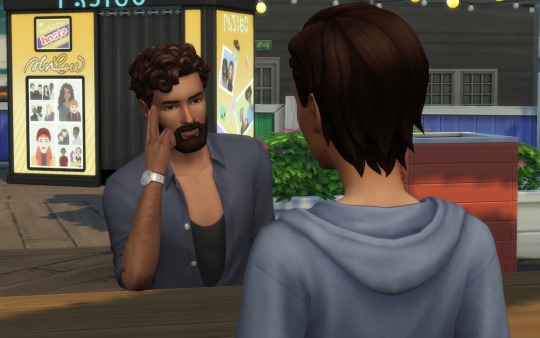
Finally, Samuel cleared his throat.
“So, uh. You look… well.”
I couldn’t help but smile. I was sweaty and Ivy had wiped some ice cream on my sleeve, but I did feel better than I had in a long time.

“Thanks. You too. The beard suits you.”
We talked for a while, carefully sticking to safe subjects. I told him about Jessica getting into fashion design, how she was planning to move to Del Sol Valley with her boyfriend. Samuel updated me on Daria and Griffin who just found out they were expecting a baby.
Then, his expression turned serious.

“Do you ever… have you talked to Charlie?”
I realised that it was the first time either of us had spoken his name for almost two years.
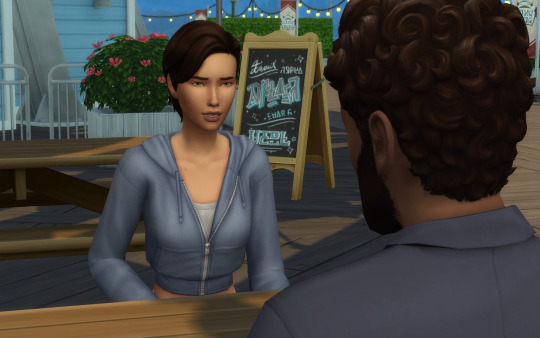
“No. I wouldn’t pick up if he called, but he hasn’t tried.”

“He actually called me when he heard about the divorce. But we didn’t speak for long. I may have said that I would personally castrate him without anaesthesia if he ever contacted you again.”
“Samuel -”

“With a dull scalpel. I was pretty angry at the time, and he said some really cruel things, and… I just don’t know who he is anymore. I haven’t heard from him since.”
I didn’t know what to say. I wanted to give him a hug, but I couldn’t imagine Samuel would ever want me to touch him again.
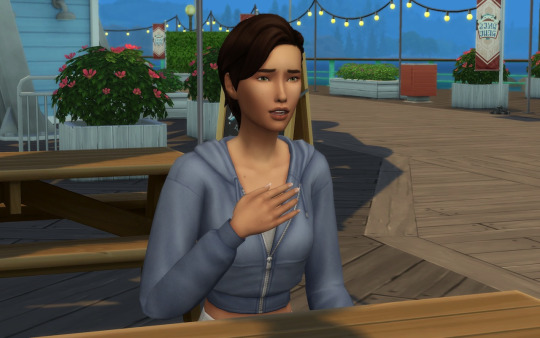
“Samuel, I’m really sorry that I screwed things up for everyone. Not just us, but you and Charlie too.”
Samuel sighed and attempted to smile.

“Hey, he wasn’t exactly blameless. He was supposed to be my brother. He should never have... anyways, you said you wanted to discuss the girls’ living arrangement? Are you not happy with the split?”
I was grateful for the change of subject.
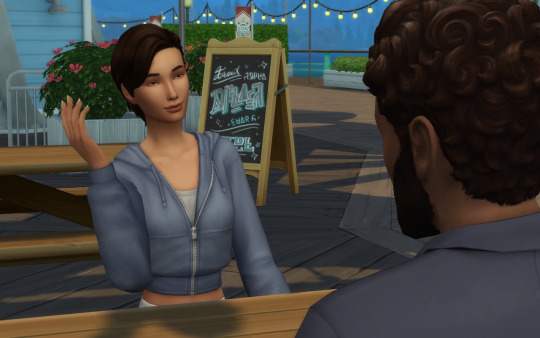
“I am, but I’ve been asked to coach the track & field team for seniors as well. And I would like to accept, but it’s in the evenings and I’d need you to have the girls a bit more often. I know your schedule can be difficult, so I only want to do it if you can find the time.”
He looked relieved.

“Sure, we can figure something out. For a moment I wondered if you, you know… Found someone.”
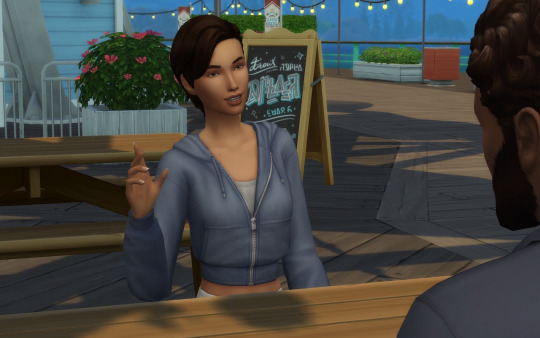
“Oh, no. It’s nothing like that. I just figured I should be doing something worthwhile with my time now that the girls are getting older, instead of being stuck in the house all the time.”

“You do know that was always an option, right?”
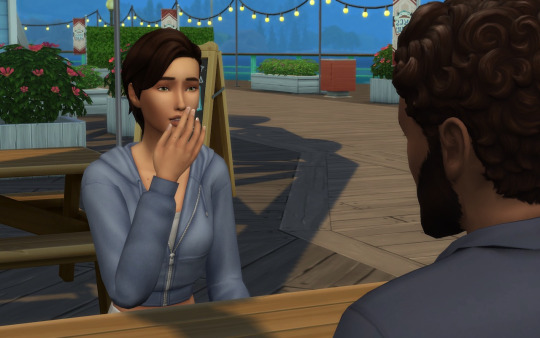
��Sorry, Samuel, I don’t mean to sound like I was a prisoner. It was my own choice to stay at home, I know. And you did try to talk me out of it.”

“Maybe I should have tried harder.”
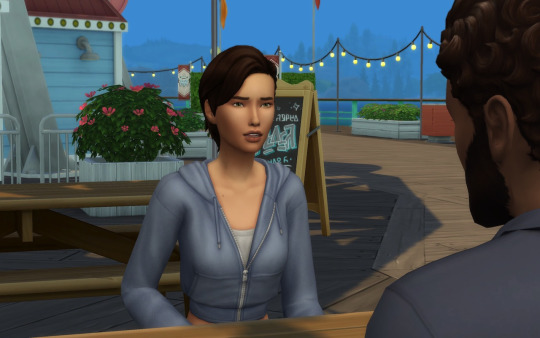
“Samuel, don’t. I doubt you could have convinced me back then. I was pretty out of reach, I think. You were right, there was nothing you could have said that would have made me listen.”
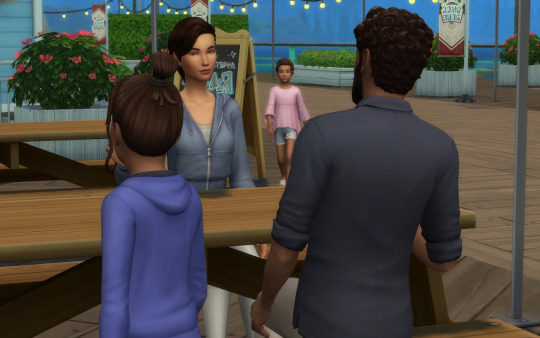
We were both quiet.
I wanted to ask him if he was seeing someone, ask why he cared if I was. But suddenly the girls were back and begged for more ice cream and the moment had passed.
beginning / previous / next
#duchellilegacy#duchellichapters#duchelligen4#freya duchelli#samuel ward#hailey duchelli#ivy duchelli
39 notes
·
View notes
Text

Reviews are in:
“This is a deeply moving, challenging novel, and certainly very prescient. What is our obligation to others, particularly those in war-torn countries? How are we implicated through the tangled threads of history? Wren has written an anti-war novel, but it’s far more nuanced and unclear than I think we’d like to believe that the position of anti-war is. … A perfectly positioned novel for the current historical moment.” – Alison Manley, The Miramichi Reader
“No matter where your political beliefs fall, Jacob Wren’s new novel demands to be read for its poignant and propulsive nature. And I will double down on Dry Your Tears to Perfect Your Aim being one of the best pieces of Canadian Literature this year. Just don’t let the prize lists fool you. You’re smarter than that.” – Adam Ferris
“In Dry Your Tears to Perfect Your Aim, Jacob Wren has written a courageous, alarming and utterly original work of fiction. The ethical conundrums it addresses are myriad and relevant, and while it offers no solutions, it is relentless in its exposure of unflattering human truths that many of us, given a choice, would prefer to avoid.” – Ian Colford, The Seaboard Review
“A Jacob Wren novel is known for several things: narrators undergoing neurotic self-interrogation, a consideration of the gap between theory and practice, and a certain metafictional flair when it comes to signalling the work’s own existence as a radical text. All of these authorial trademarks are sent into overdrive in Dry Your Tears to Perfect Your Aim, Wren’s introspective protest novel about the role that doubt plays in any political awakening.” – Jean Marc Ah-Sen, Quill & Quire
“Dry Your Tears to Perfect Your Aim is an anti-war novel that reminds us of our complicity in global conflicts, while offering a glimpse of the hope that drives resistance.” – Ariane Fournier, Maisonneuve
“Jacob Wren’s latest scintillating work of literary fiction, Dry Your Tears to Perfect Your Aim, is a book in revolt. Wren crafts a bold and unsettling narrative with the kind of clarity to explore ethical dilemmas that are both numerous and timely.” – Samuel Wise, Montreal Guardian
10 notes
·
View notes
Text
Paul did not just read playscripts, he regularly attended the Liverpool Playhouse and the Royal Court, where he would sit up in the shilling seats by himself. PAUL: I was quite a lone wolf on all of that. I never used to go with anyone. I couldn't find anyone who wanted to go! [...] I'd take a bus to the Pier Head, go on the ferry by myself. I'd take a book of poetry, or a play, or something to read, come back on the ferry, take a bus home. Think of myself as a bit of a poet, observing people, sit on a bench and write a little bit about what I saw. I was very conscious of gathering material. I didn't know then what it would be for. I really fancied myself as an artist. I was preparing. I didn't know how the hell I was ever going to achieve it from my background. People didn't become this. But my mind was full of it, it was an intoxication. I'd buy books from Philips Son & Nephews: Under Milk Wood, a lot of Dylan Thomas; John Steinbeck; a little bit of Samuel Beckett, Waiting for Godot. Or I'd steal them. There was a bookshop you could go in and very easily nick them. Gerald Hoffnung's cartoons was the first book I stole. I'd go to lectures. I went to a lecture on Le Corbusier at the university. I was trying to prepare myself to be a student. I had time, I'd do a little bit of work with the band, but I didn't know if I would actually get to university or get somewhere. What was my next thing gonna be? Teachers' training college?
- Barry Miles, Paul McCartney: Many Years From Now (1997)
#bold my own#paul mccartney#from a poor working class family myself and the feeling of a need to prepare/better yourself#whilst having that uncertainty & thinking 'people don't become this' when doing anything creative or academic is relatable#also. how many stories are there of paul stealing when growing up lol#i swear i've seen multiple now
5 notes
·
View notes
Text
Literary Canon (from kissgrammar)
The Holy Bible, Authorized King James Version [At a minimum, the books of Genesis, Exodus, Job, Psalms, from the Old Testament; Matthew, Mark, Luke, John, and Apocalypse from the New.] Whether or not you are Christian is irrelevant. The civilization in which we live is based on and permeated by the ideas and values expressed in this book. Understanding our civilization, the world in which we live, is probably impossible without having read -- and thought about -- at least the most famous books in the Bible. Historically, the King James Version is considered the most artistic, and thus has probably had the most literary influence.
Homer, The Iliad
Homer, The Odyssey
Sophocles, Oedipus the King (Oedipus Rex)
Sophocles, Antigone
Plato, The Republic, especially "The Myth of the Cave"
Ovid, Metamorphoses
Saint Augustine, The Confessions
Dante, The Divine Comedy
Giovanni Boccaccio, The Decameron
Niccolo Machiavelli, The Prince
Giambattista Vico, Principles of a New Science
Miguel de Cervantes, Don Quixote
Geoffrey Chaucer, The Canterbury Tales
Romeo and Juliet
King Lear
Hamlet
Othello
Macbeth
John Donne, "Holy Sonnet XIV"
John Donne, "A Valediction Forbidding Mourning"
Andrew Marvell, "To His Coy Mistress"
John Milton, Paradise Lost
Jonathan Swift, Gulliver's Travels
A Modest Proposal
Daniel Defoe, Robinson Crusoe
Laurence Sterne, The Life and Opinions of Tristram Shandy, Gentleman
Michel de Montaigne, Essays, especially "Of Experience"
Francois Rabelais, Gargantua and Pantagruel
Moliere, The Misanthrope
Blaise Pascal, Pensees
Jean-Jacques Rousseau, Emile
Voltaire, Candide
Erasmus, In Praise of Folly
Johann Wolfgang von Goethe, Faust, Parts One & Two
Honore de Balzac, Old Goriot (also translated as Pere Goriot)
Stendhal, The Red and the Black
Gustave Flaubert, Madame Bovary
Emile Zola, Germinal
Henrik Ibsen, A Doll's House
William Blake
William Wordsworth
Jane Austen, Pride and Prejudice
Lord Byron, Don Juan
John Keats, "Ode on a Grecian Urn"
Robert Browning, "My Last Duchess"
Charles Dickens - Oliver Twist
A Tale Of Two Cities
Hard Times
A Christmas Carol
Matthew Arnold, "Dover Beach"
John Stuart Mill, On Liberty
Lewis Carroll, Alice in Wonderland
Charlotte Bronte, Jane Eyre
Emily Bronte, Wuthering Heights
Francis Thompson, "The Hound of Heaven"
Samuel Butler, Erewhon
Oscar Wilde, The Picture of Dorian Gray
George Eliot- Silas Marner
Middlemarch
Robert Louis Stevenson, Dr. Jekyll and Mr. Hyde
Friedrich Nietzsche - Beyond Good and Evil
The Will To Power
The Birth of Tragedy
On the Genealogy of Morals
Alexander Pushkin - Eugene Onegin
The Bronze Horseman
Nikolai Gogol -The Overcoat
Dead Souls
Mikhail Lermontov, A Hero of Our Time
Ivan Turgenev, Fathers and Sons
Fyodor Dostoevsky -Notes From the Underground
Crime and Punishment
Leo Tolstoy -The Death of Ivan Ilych
War and Peace
Anton Chekhov, The Cherry Orchard
James Fenimore Cooper, The Deerslayer
Ralph Waldo Emerson, Essays
Emily Dickinson - "Because I Could Not Stop For Death"
"The Tint I Cannot Take"
"There's a Certain Slant of Light"
Walt Whitman - "Song of Myself"
"The Sleepers"
"Crossing Brooklyn Ferry"
"As I Ebbed With The Ocean of Life"
"Out of the Cradle Endlessly Rocking"
"When Lilacs Last in the Dooryard Bloomd"
Nathaniel Hawthorne - Young Goodman Brown
The Scarlet Letter
Herman Melville, Moby-Dick
Edgar Allen Poe - "The Raven"
The Cask of Amontillado
Henry David Thoreau, Walden
Kate Chopin -The Story of An Hour
The Awakening
Stephen Crane, The Red Badge of Courage
Henry James
Mark Twain, The Adventures of Huckleberry Finn
Luigi Pirandello
11 notes
·
View notes
Note
(He found a chair next to you and petunia coiled around his arm to greet you)
Archie: Well Well Sammy boy, looks like you’ve got a little crush~ Samuel: Why you cretin!
Archie: (chuckles)
Drac: Please you two stop with this childish behavior you are overwhelming our guest!
What do I even wear to dinner? Is it like, a fancy dresscode? Given the whole manor thing, I wouldn't be surprised. But what if it's not some sort of classy dinner, what if it's more casual?
I was pacing my room, debating between two outfits to wear. The outfits, layed out on the floor, were entirely different; one a more fancy outfit, while the other was more casual but still presentable.
"Maybe this was a bad idea. I haven't even gone to dinner yet...." I sighed.
@ferris-aelis
(There’s a knock on your door again)
53 notes
·
View notes
Text
@celestialcrowley tagged me in an in-depth bio thing (thank u!!!) so here's some stuff about me:
real name: samuel's my full first name so let's say that?
nickname & nickname origins: sam!!! the only people who call me samuel are a couple of my friends when they sort of pretend to scold me, ha. or if they're singing little freak by harry styles but the line is "little freak, samuel" instead of "little freak, jezebel" (i have a tattoo of the words 'little freak' because of how much i love that song. i also am one i guess)
a couple people i know who are lotr fans call me samwise but i haven't read or watched lotr yet so i'm reluctant to accept this as a nickname hehe
sammi is what my sister and my very closest friends call me. if someone i'm not close to calls me that, my sister vetoes lol
ao3: sinchester
social media/s: i have all of the big ones but they're all personal accounts so</3
state country: i'm from the uk. always lived in london, it's the one true love of my life (and it's a character in good omens in its own right, fight me). i will answer ur state question in another way by saying that i usually visit the us once a year (usually for gigs and to see friends) and my last trip was to ny
pets: none</333 my grandparents have two lovely german sheps and a black cat which are my most precious loves though
hobbies: i like reading (fantasy, romance, twentieth-century poetry and nineteenth-century fiction mostly), writing (prose, screenplay and very bad poetry), live music/following tours, vinyl records, tea, whiskey, sitcoms, romcoms, and american traditional tattoos, among other things
personality: i have the most warped and harsh sense of self so i asked my best friend amy to describe my personality. this is what she said:

brb gonna go cry now
favourite holiday: christmas because i love christmas music of the easy listening jazz persuasion, and also because i love a lot of christmas films
favourite food: mac and cheese, bao buns, strawberries
favourite dessert: potentially cheesecake?
favourite colour: baby blue<3
favourite quote/s: "i am an unspeakable of the oscar wilde sort" / "not a southern pansy, the southern pansy", and in the same vein... "i'm not a big fat panda, i'm the big fat panda" / "there are heroes in the seaweed, there are children in the morning, they are leaning out for love and they will lean that way forever"
favourite book/s: call me by your name (sue me), good omens, the fables series, pride and prejudice (cliched i know sorry, i have read all of austen's work but it's her most popular for a reason), the scott pilgrim series, the spud series, the princess bride
favourite tv shows: good omens, avatar: the last airbender, peep show, supernatural (reluctantly), bob's burgers, arrested development, ghosts, yonderland. it's only just come out of course but honorary mention goes to scott pilgrim takes off
favourite film/s: shrek is my favourite of all time. it's just got everything. trust me, i went to film school (i actually did tho). then we've also got the nightmare before christmas, ferris bueller's day off, scott pilgrim, submarine, clueless, deadpool, the princess bride
favourite character/s: sam winchester, aziraphale, crowley, katara, sokka, jack and sally, kitty (ghosts), lucille bluth, envy adams, wallace wells
favourite actor/s: i've always found this a really difficult one to answer but i'll just say mae whitman because she's been in 3 of my favourite things ever and slayed all of them (avatar: the last airbender, arrested development and scott pilgrim)
favourite song/s: my favourite songs of all time are probably...
a certain romance - arctic monkeys
happiness/the gondola man - elliott smith
i used to be someone - kevin devine
i need some sleep - eels (shrek 2 teehee)
the way i loved you - taylor swift
let's call the whole thing off - louis armstrong and ella fitzgerald
that old feeling - frank sinatra (prefer his earliest version of this song to any other versions but i like ella's rendition too)
favourite music genre/s: i listen to pockets of all different guitar music, some pop and some jazz
favourite podcast/s: braving the elements, which is the official podcast for avatar: the last airbender and the avatarverse in general (hosted by the actor of zuko and the actor of korra!!!)
have you ever met a celebrity: oh god, erm... i've met so many musicians and actors (mostly actors that are less well-known) but i'll just mention the most famous ones. on purpose (some of whom i now regret lol): dua lipa, halsey, frank iero, brendon urie, jared padalecki, jensen ackles, jinkx monsoon (and loads of other drag race queens, but she's my favourite). by accident as they've come into my work: matt berry (i died), rob delaney, a couple of actors from sex education, sharon rooney (i actually bumped into her on the way to work oops). people i see around my local area or my area of work but haven't met: graham coxon from blur, peter capaldi, olly alexander. i know i've forgotten people but they'll come back to me hah - living in north london and working in central london means you do tend to see famous people sometimes
have you ever been to a concert: not sure exactly how many but my estimate is 200+. one band i've seen 37 times alone... but yeah, i follow two tours a year on average and then i'll go to gigs as a one-off for artists i don't commit as hard to lmao
do you collect anything: vinyl and soft toys! i also like to have lots of different interesting teas in my cupboard
do you have any idols: not sure i could call anyone i like an idol of mine but i naturally want to be neil gaiman when i grow up. i also would absolutely love to be as good at words as leonard cohen was. i guess taylor swift because i love her more than almost any other musician and have done since i was 8 years old but... she's a person at the end of the day (and a billionaire which is questionable)
is there a real life friend you can be completely yourself with: i feel i can be entirely myself around @icanbeurangle, among a few other people from different parts of my life. the person who wrote my little personality bio above, along with our mutual friend, and then a couple of friends i've known since school. i've also got friends who started off as internet friends but are now irl friends (the uk is a small place) who come under this category uwu
where would you love to travel to: off the top of my head, new zealand and mexico. i'd also like to see more of wales (i only went once or twice as a small child)
random fact about yourself: i'm an identical twin? it doesn't feel random at all but yeah haha
if you made it this far without falling asleep, well done!!! thank u so much for reading, i hope u didn't bore u to tears<3 i've missed out a couple questions where i addressed them already in a previous answer
no pressure tags (but i want to read up on u all!!!): @raining-stars-somewhere-else @sad-chaos-goblin @crowleyslvt @indigovigilance @icanbeurangle @bowtiepastabitch @genderqueer-hippie
11 notes
·
View notes
Note
mw counterparts?
this list got a little bit longer than anticipated. as there's soooooo many counterparts to consider choosing from ! so, i put it under a read more for you !

counterparts: monica geller, ross geller, joey tribbiani, chandler bing, janice litman, mike hannigan, ursula buffay, aria montgomery, emily fields, spencer hastings, mona vanderwaal, alison dilaurentis, caleb rivers, maya st germain, toby cavanaugh, betty cooper, veronica lodge, cheryl blossom, archie andrews, reggie mantle, toni topaz, tabitha tate, quinn fabray, rachel berry, brittany pierce, olivia baker, layla keating, jordan baker, jaymee, spencer james, lucas scott, peyton sawyer, brooke davis, quinn james, julian baker, anna taggaro, rachel gatina, blair waldorf, serena van der woodsen, dan humphrey, nate archibald, callie adams foster, mariana foster, buffy summers, willow rosenberg, tara mclay, kendra young, faith lehane, cordelia chase, heather mcnamara, marissa cooper, summer roberts, seth cohen, angel, anya jenkins, ryan atwood, taylor townsend, elena gilbert, caroline forbes, bonnie bennett, stefan salvatore, anna zhu, enzo st john, sandy olson, betty rizzo, frenchy, danny zuko, marty, jan, sonny, jackie burkhart, donna pinciotti, eric forman, laurie forman, belly conklin, sloane peterson, ferris bueller, duckie dale, bianca stratford, kat stratford, patrick verona, mia thermopolis, sabrina spellman, harvey kinkle, libby chessler, barbie roberts, ken carson, jenna rink, allie hamilton, noah calhoun, brandon walsh, david silver, brenda walsh, kelly taylor, donna martin, conrad fisher, jeremiah fisher, steven cokin, taylor jewel, sarah cameron, jj maybank, john b routledge, kiara carerra, pope heywood, cleo, topper thornton, prue halliwell, paige matthews, piper halliwell, phoebe halliwell, meredith grey, arizona robbins, jackson avery, callie torres, april kepner, derek shephard, alex karev, cristina yang, lizzie stevens, callie torres, jo wilson, addison montgomery, lexi grey, atticus lincoln, nancy drew, lucy grey, sam montgomery, austin ames, jen lindley, pacey witter, dawson leery, katherine pierce, rebekah mikaelson, hayley marshall, tatum riley, sidney prescott, casey becker, tara carpenter, samantha carpenter, beca mitchell, chloe beale, jessica day, winston schmidt, cece parekh, laney boggs, dewey riley, gale weathers, georgina sparks, elle woods, francesca bridgerton, daphne bridgerton, penelope featherington, sookie stackhouse, karen smith, regina george, gretchen weiners, janis ian, cady heron, aaron samuels, dj tanner, stephanie tanner, marcia brady, cindy brady, greg brady, carrie bradshaw, cher horowitz, kirby reed, jim halpert, michael scott, kelly kapoor, pam beesly, peter parker, mary jane watson, analise keating, olivia pope, tony stonem, effy stonem, joey donner, john bender, allison argent, scott mccall, lydia martin, olive penderghast, maggie greene, marty mcfly, bella swan, alice cullen, charlie swan, emmett cullen, jacob black, carlisle cullen, esme cullen, jane volturi, morticia addams, donna and sophie sheridan, lorraine banes, jennifer parker, sam winchester, luke danes, dean forester, tristan dugray, lane kim, paris geller, logan huntzberger, jeanie bueller, simon basset, kate sharma, colin bridgerton, shiv roy, gerri kellman, roman roy, olivia benson, clary fray, isabelle lightwood, jace herondale, simon lewis, daphne blake, shaggy rogers, velma dinkley, fred jones, cinderella, ariel, tiana, jasmine, tom wambsgans, kendall roy, greg hirsch, lestat de lioncourt, louis de point du lac, and claudia !
#rp#appless rp#appless rpg#fandom rp#canon rp#oc rp#new rp#town rp#tumblr rp#mumu rp#apartment rp#relaxed rp#literate rp#mature rp#multifandom rp#palmviewanswered.#counterparts.#mw.
5 notes
·
View notes
Text

21st June 1791 saw the birth of the engineer Robert Napier, the engineer.
Born in Dumbarton, Napier worked as an apprentice to his father before moving to Edinburgh where he worked for engineer Robert Stevenson.
In 1815, he began his own engineering business in Glasgow. Acknowledging Henry Bell's work in the development of the steam-powered Comet, Napier began building marine steam engines. His first engine performed well in the steamer Leven and is preserved today at the Denny Ship Model Experiment Tank. He founded Parkhead Forge in Glasgow in 1837 to make iron for boiler plate. In 1841, he began building ships, which included some of the earliest iron-clad warships. Napier did much to establish the international reputation of the River Clyde as an centre for ship-building. With the Canadian shipping tycoon Samuel Cunard, he planned steam-powered vessels for transatlantic service and helped set up a company to run them. Napier also proved the economy and versatility of steam-powered vessels to the Admiralty.
In 1849 he built Leviathan, the world's first train ferry, which sailed from Granton to Burntisland. The Persia, launched in 1854, was the world's largest ship and the ironclad Black Prince, which was launched from Govan in 1861, was the largest Clyde-built ship of its time.
In 1861, the Parkhead Works were bought by Napier's son-in-law and William Beardmore. Napier won international respect; he became President of the Institution of Mechanical Engineers and was honoured by France and Denmark. He made his home at West Shandon, by the Gare Loch, which he filled with a remarkable collection of furniture, porcelain and paintings, including old masters and works by artists such as Raeburn and McCulloch.
Napier's wife died in 1875 and, overtaken by grief, he took ill and died at West Shandon the following year. Thousands lined the route to Dumbarton Parish Church, where he was buried in the family vault.
5 notes
·
View notes
Text
What are we going to do about Julie Samuel, actress and much much more?
Julie starred in the movie Ferry Cross The Mersey with Gerry and The Pacemakers. (Photograph by George Elam/ANL/Shutterstock -1355671a) Julie Samuel has been around a bit, done most everything in showbiz. She was an actress in well over 100 British TV shows – The Avengers, Coronation Street, Dixon of Dock Green, Z Cars et al… in movies including The Day The Earth Caught Fire, The Long Ships and…
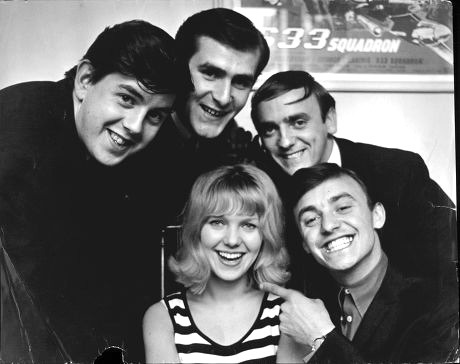
View On WordPress
#acting#Alan Klein#autobiography#Charlie Chaplin#Cola Boy#Come Outside#Ferry Cross The Mersey#Fred Karno#Gerry and The Pacemakers#Italia Conti#Janey Lee Grace#Julie Cracknell#Julie Samuel#Lawson & Odell#Mexico 70#movies#Problems Unlimited#show business#St Etienne#The Day The Earth Caught Fire#The Long Ships#TV#What Are We Going To Do about Julie#William Foyle
1 note
·
View note
Text
DEAD WHISPER Demonic horror - trailer and release date
Dead Whisper is a 2024 supernatural horror film in which a Cape Cod lawyer is drawn to a mysterious island where he is tempted by a reunion with his dead daughter but at the cost of his soul. Directed by Conor Soucy from a screenplay co-written with Colin Charles Dale. Blurb: “Samuel Dunning stars as Elliot Campbell, a Cape Cod lawyer and grieving father. When Elliot boards a ferry on business,…

View On WordPress
2 notes
·
View notes